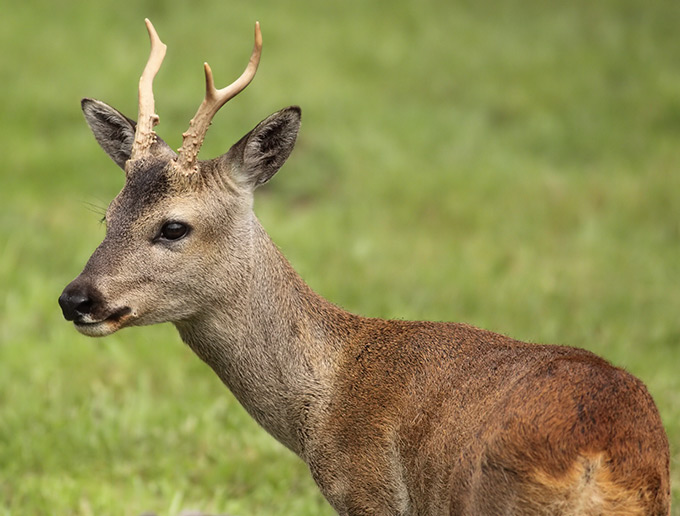
Siberian roe deer(Capreolus pygargus)
Phylum —chordata
Class — mammalia
Order — artiodactyla
Family — cervidae
Genus – сapreolus
Appearance
The Siberian roe deer is a moderately sized metacarpalian deer, with a long neck and large ears. In winter the northern populations exhibit light gray coloring, but their southern counterparts are grayish brown and ochraceous. The belly is creamy and the caudal patch is white. In the summer, their coloring is reddish. Young have a spotted coat. Males are larger and have three-tined antlers, widely spaced and slanting upward, which are shed in the autumn or early winter and begin to regrow shortly thereafter. Large deer weighing up to 60 kg. It measures up to 1 m. over the shoulder and reaches a total body length of 1,50 m.
Habitat
A Siberian roe deer is found in northeastern Asia. In addition to Siberia and Mongolia, it is found in Kazakhstan, the Tian Shan Mountains of Kyrgyzstan, eastern Tibet, the Korean Peninsula, and northeastern China.
Behavior
Males mark their territory with olfactory marks, using secretion glands on the head skin, which they rub against trees, shrubs, and high grasses, or with visual marks, by fraying trees with their antlers.
Vocal signals are also a form of communication in Siberian roe deer. They have six signals: squeaking or whistling, rasping, barking, whining, screaming, and nonvocal sounds.
Some Siberian roe deer perform mass migrations.
Diet
The diet of the Siberian roe deer consists of over 600 species of plants – mostly herbaceous dicotyledons (58%), monocotyledons (16%), and woody species (22%). In winter, without proper sustenance, they have a lowered metabolic rate. In summer, their dietary need for sodium necessitates visits to natural salt licks.
Water is usually obtained through moisture-rich foods as opposed to directly from source.
Reproduction
Mating occurs in August and September, and female roe deer are the only ungulates to undergo embryonic diapause. Embryonic implantation takes place in January and gestation lasts 280–300 days. Females usually have two young at a time, which are weaned after 4–5 months.
Females reach sexual maturity in their first year of age but usually do not breed until their second. Males usually mate in their third year of life.
The lifespan the Siberian roe deer does not usually exceed 10 years.
In captivity
To ensure greater efficiency,roe deer should be bred initially in fenced enclosures of up to 124 acres. In the forest zone, the most suitable places for aviaries are small woodlands and their edges, sparsely wooded areas with good shrub growth, and clearings. Such biotopes are the most rich in natural forages, and shelters for roe deer. For the fence, the most suitable is a metal galvanized wicker mesh height of 1.5-2 m, fixed to the ground embedded in asbestos cement pipes or iron concrete pillars.
As food forthe Siberian roe deer you can use prepared in the summer and dried branch feed (branches of willow, birch, aspen, raspberry, oak, and others) and hay, as well as grain feed (oatmeal or oats, wheat) or grain waste compressed into pellets. For bulk feed, special feeders are installed in the enclosure at the rate of one for 10-15 animals. Forage conservation-based in the brooms are hung on poles near the feeders.
Roe deer easily tolerate overpopulation. The enclosure can contain a large number of animals — up to 5-7 individuals per 2.5 acres.
 Russian
Russian
 English
English























